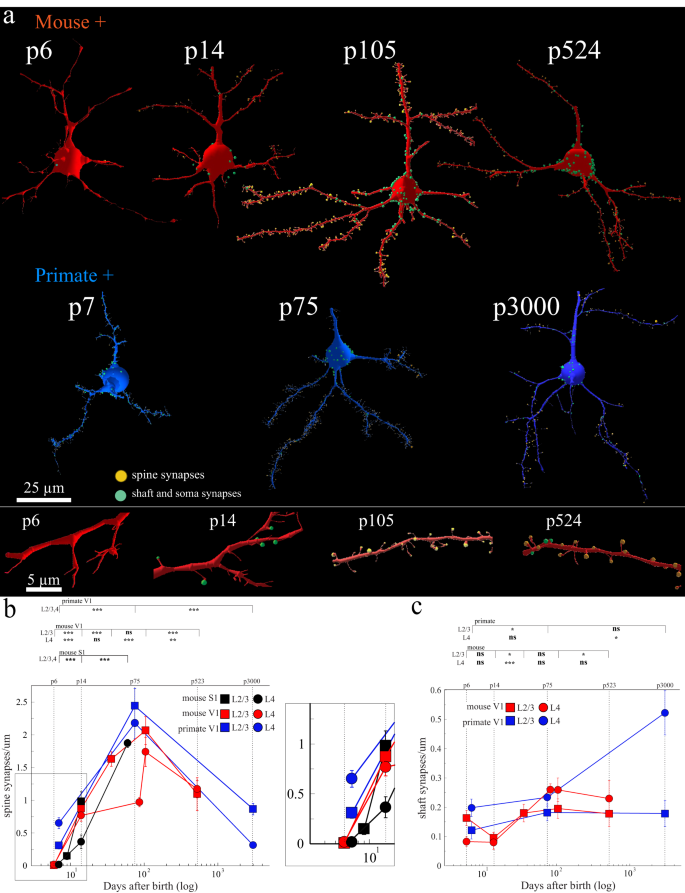2023-12-05 アルゴンヌ国立研究所(ANL)
◆従来、マウスの脳は他の長寿哺乳動物、特に霊長類や人間よりも速く発達すると考えられていましたが、この研究によれば、その仮定は完全に誤っていたとされます。この結果が正しいなら、これまでの研究が若いマウスの脳データを基にして行われたさまざまな人間の状態、例えば自閉症や他の神経発達障害の研究に疑問を投げかける可能性があります。研究者は、これまでの考え方が誤りであることから、老化と発達について再考する必要があると述べています。
<関連情報>
- https://www.anl.gov/article/when-do-brains-grow-up
- https://www.nature.com/articles/s41467-023-43088-3
霊長類とマウスにおける大脳皮質シナプスの等時性発達 Isochronic development of cortical synapses in primates and mice
Gregg Wildenberg,Hanyu Li,Vandana Sampathkumar,Anastasia Sorokina & Narayanan Kasthuri
Nature Communications Published:04 December 2023
DOI:https://doi.org/10.1038/s41467-023-43088-3

Abstract
The neotenous, or delayed, development of primate neurons, particularly human ones, is thought to underlie primate-specific abilities like cognition. We tested whether synaptic development follows suit—would synapses, in absolute time, develop slower in longer-lived, highly cognitive species like non-human primates than in shorter-lived species with less human-like cognitive abilities, e.g., the mouse? Instead, we find that excitatory and inhibitory synapses in the male Mus musculus (mouse) and Rhesus macaque (primate) cortex form at similar rates, at similar times after birth. Primate excitatory and inhibitory synapses and mouse excitatory synapses also prune in such an isochronic fashion. Mouse inhibitory synapses are the lone exception, which are not pruned and instead continuously added throughout life. The monotony of synaptic development clocks across species with disparate lifespans, experiences, and cognitive abilities argues that such programs are likely orchestrated by genetic events rather than experience.


